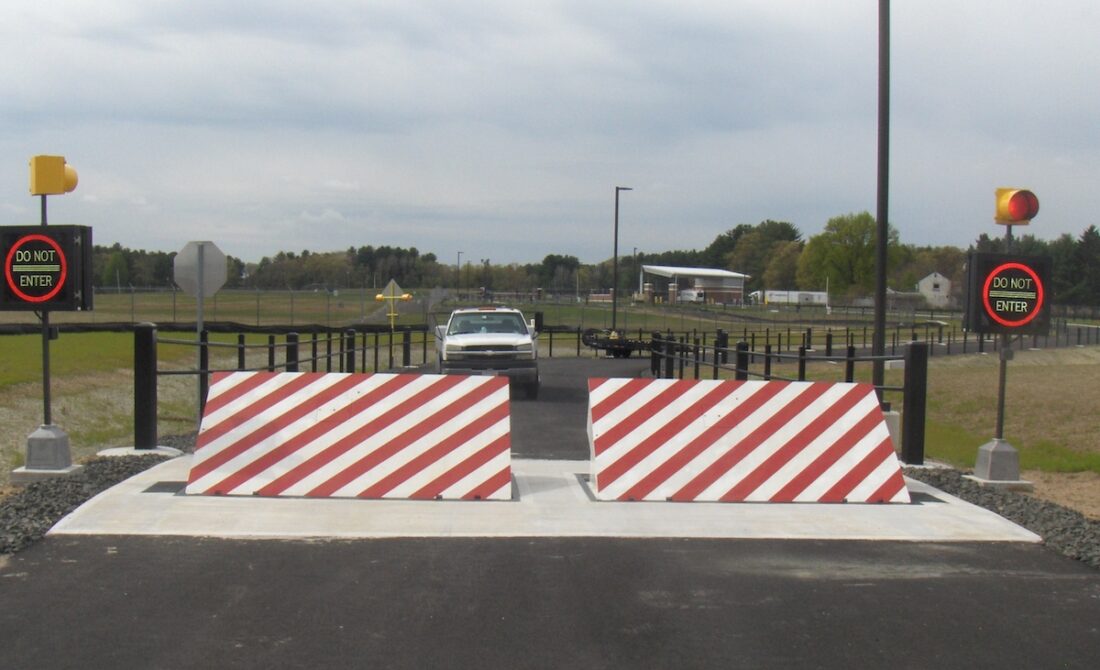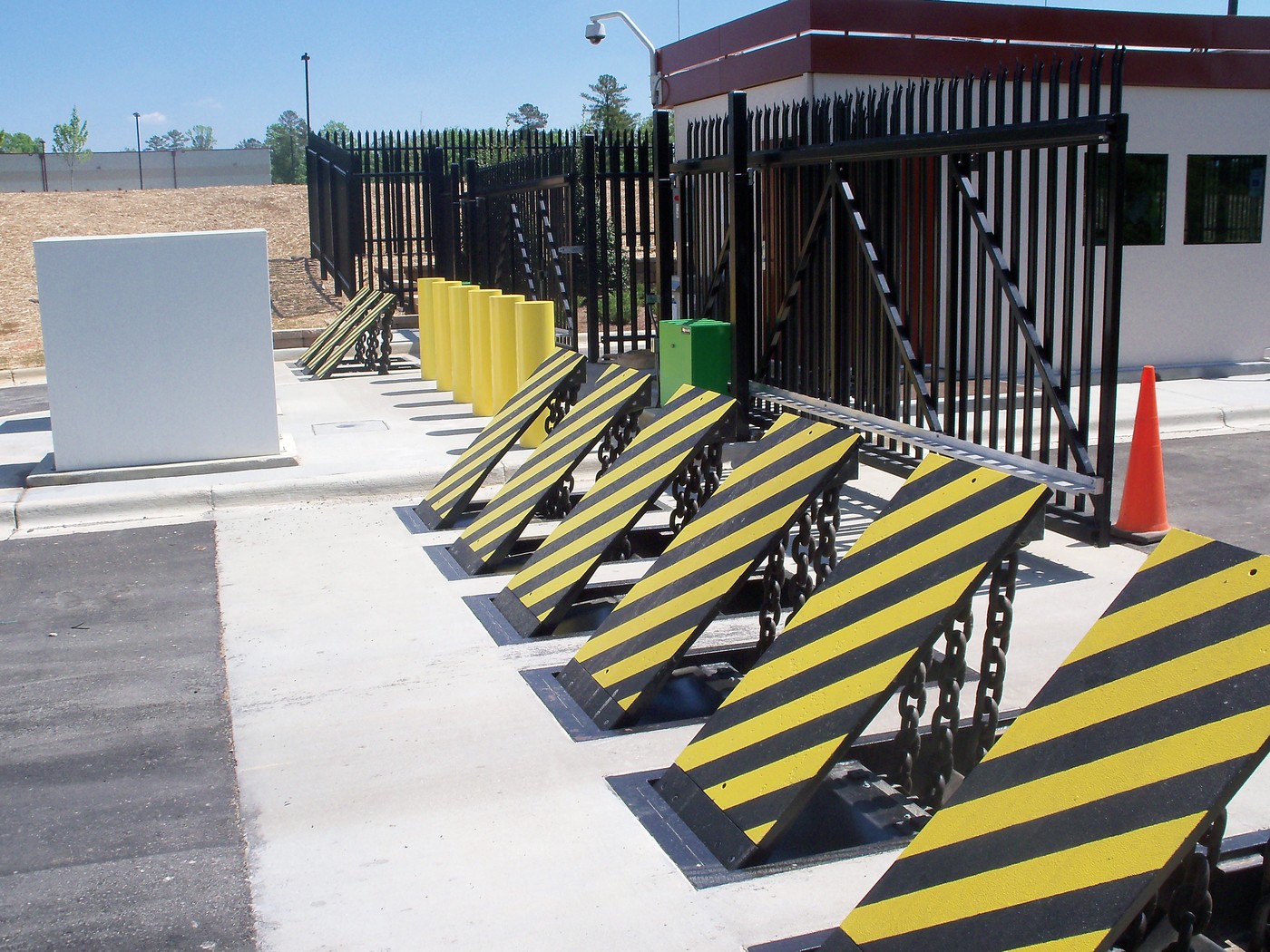The Main Principles Of Wedge Barriers


18 might be done quicker, conveniently, and expense properly. FIG. In particular personifications, the anchor 30 may be a steel structure including plates, light This Site beams(e. g., I-beams ), and/or various other structures that are safeguarded within the foundation 14, which might be concrete. At the surface area 12, an upper side 28 of the support 30 may be at the very least partially revealed
, consequently enabling the accessory of the obstacle 10 to the anchor 30. g., threaded holes)in several beams or plates of the anchor 30 may be subjected to the surface 12. In this fashion, screws 32 or various other mechanical bolts might be made use of to protect the obstacle 10 to the anchor 30. As the obstacle 10 is mounted to the surface 12 of the foundation 14, collection of debris and other material beneath the barrier may be minimized, and components of the bather 10 may not be exposed to below quality settings. As shown by recommendation numeral 52, the training device 50 includes elements disposed below the wedge plate 16. The parts 52 underneath the wedge plate 16 might include an electromechanical actuator, a cam, one or more camera surface areas, and so forth. Furthermore, the training device 50 consists of a spring assembly 54
The spring rod 58 is coupled to a cam(e. g., web cam 80 received FIG. 4) of the training device 50. The springs 60 disposed regarding the springtime pole 58 are kept in compression by spring sustains 62, including a dealt with springtime support 64. That is, the set spring assistance 64 is taken care of loved why not try here one to the structure 14 and the remainder of the bather 10.
Everything about Wedge Barriers
g., springtime support 65 )may be taken care of to the end of the spring pole 58 to allow compression of the springtimes 60. As the springs 60 are pressed in between the spring supports 62, the spring assembly 54 generates a force acting upon the web cam combined to the spring rod 58 in a direction 66. For instance, the continuing to be pressure put on
the cam to release the wedge plate 16 might be offered by an electromechanical actuator 84 or various other actuator. The spring assembly 54 and the actuator 84(e. g., electromechanical actuator)might operate together to equate the web cam and raise the wedge plate 16.
As pointed out above, in the released setting, the wedge plate 16 offers to block gain access to or travel past the barrier 10. The obstacle 10(e. g., the wedge plate 16 )might block pedestrians or automobiles from accessing a residential or commercial property or pathway. If a lorry is traveling towards the deployed wedge plate 16(e. For instance, in one condition, the security legs 86 may be prolonged duringmaintenance of check this site out the barrier 10.